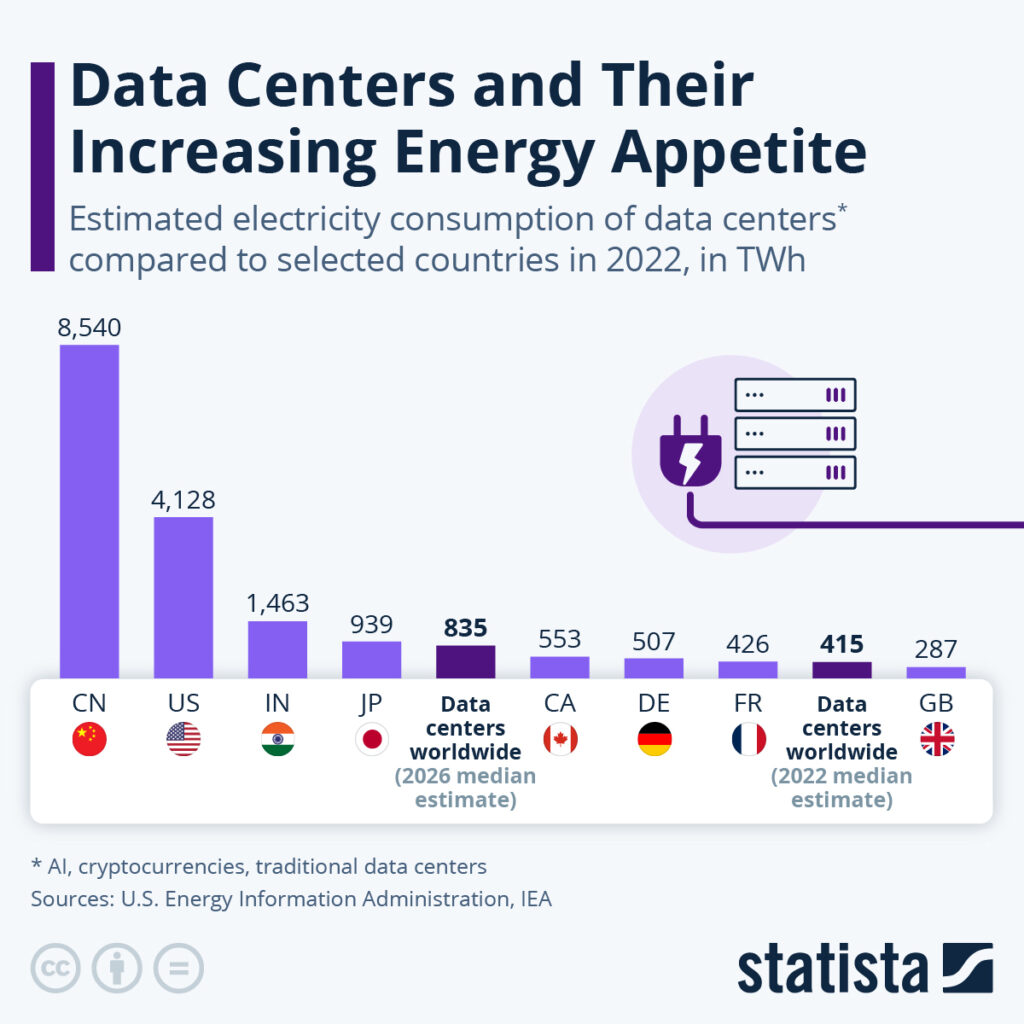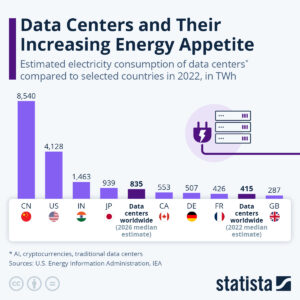Impact of AI on electricity use.
AI systems, especially those based on machine learning and deep learning, require substantial computational resources. Training large AI models involves processing vast amounts of data, which consumes significant amounts of electricity. For example, training a single AI model can emit as much carbon as five cars over their lifetimes. As AI adoption accelerates, the energy demand for data centres, which house these computational tasks, is projected to rise sharply. The chart shows that the median estimate for electricity consumption by data centres in 2026 could be 1.5 times that of Canada and three times that of the UK. What will be the source of this incremental energy? Which countries can provide cheap renewable sources of energy?
Data centres are already responsible for about 1% of global electricity demand, which is expected to grow. The energy-intensive nature of AI could exacerbate this trend. By 2025, data centres are expected to consume around 8% of the world’s electricity, with a significant portion attributed to AI processing. AI’s carbon footprint is particularly concerning when data centres rely on fossil fuels for electricity. The carbon emissions associated with AI are closely tied to the energy mix of the countries where these data centres are located.
Countries with a high concentration of data centres and a reliance on fossil fuels for energy production will be most impacted. European countries may experience different impacts. Nations like Sweden and Denmark, which have made significant strides in integrating renewable energy into their grids, are better positioned to mitigate the carbon emissions associated with AI. These countries could provide lessons for sustainable AI deployment, emphasizing the importance of clean energy in offsetting AI’s environmental impact.
Several strategies can be employed to mitigate AI’s adverse effects on electricity consumption and carbon emissions. Enhancing the energy efficiency of data centres, using renewable energy sources, and developing more efficient AI algorithms are critical steps. However, it’s also essential to implement policies and regulations promoting sustainable AI development and deployment practices. This emphasis on regulatory measures and strategic foresight should reassure and instil confidence in our ability to manage AI’s environmental impact.




